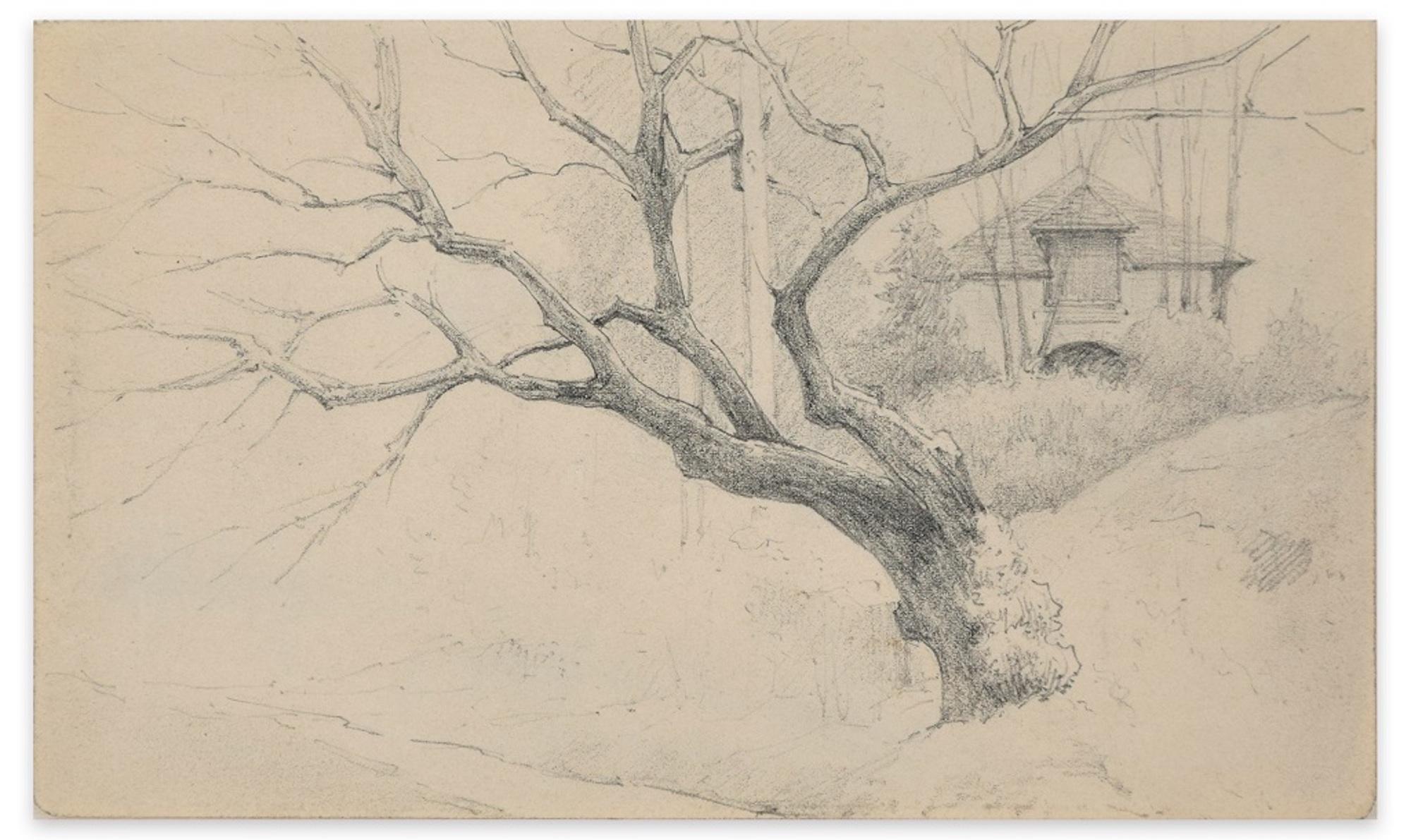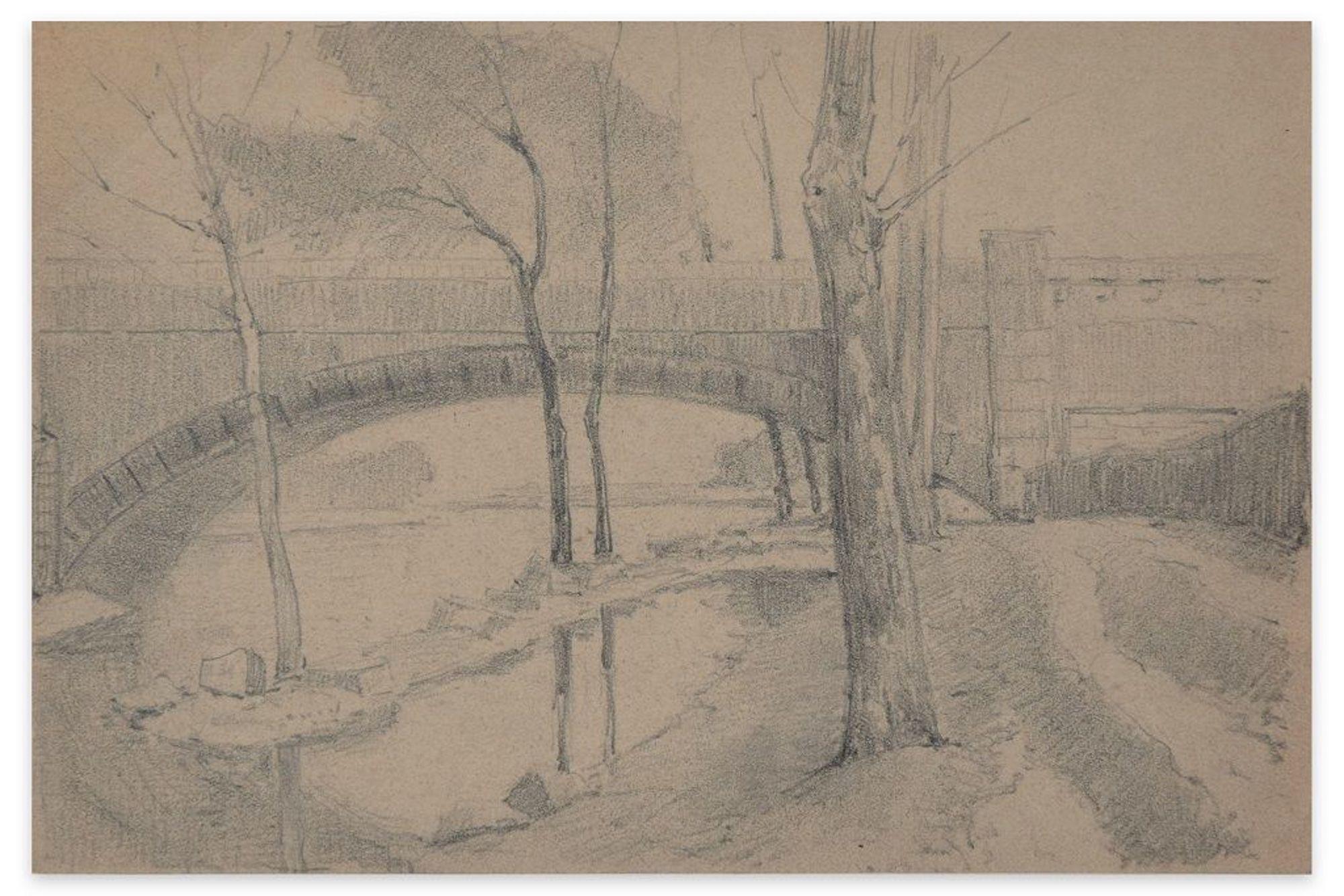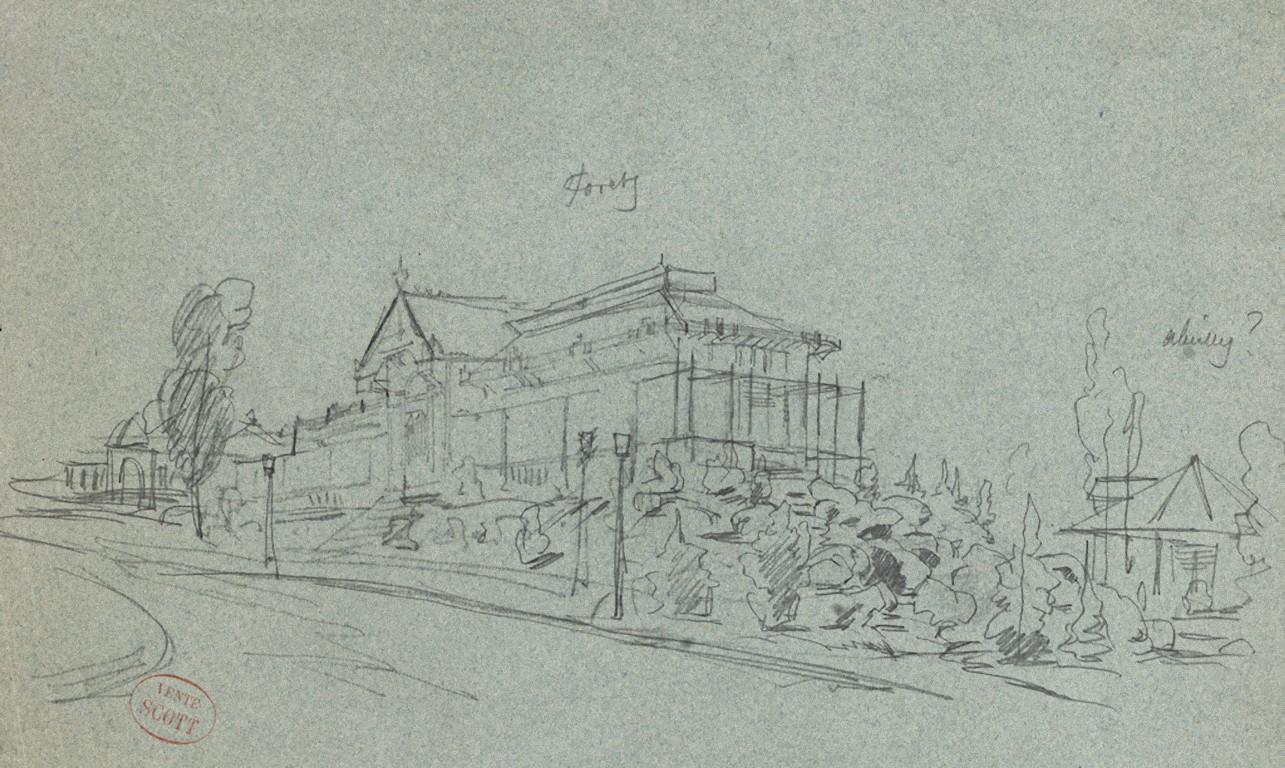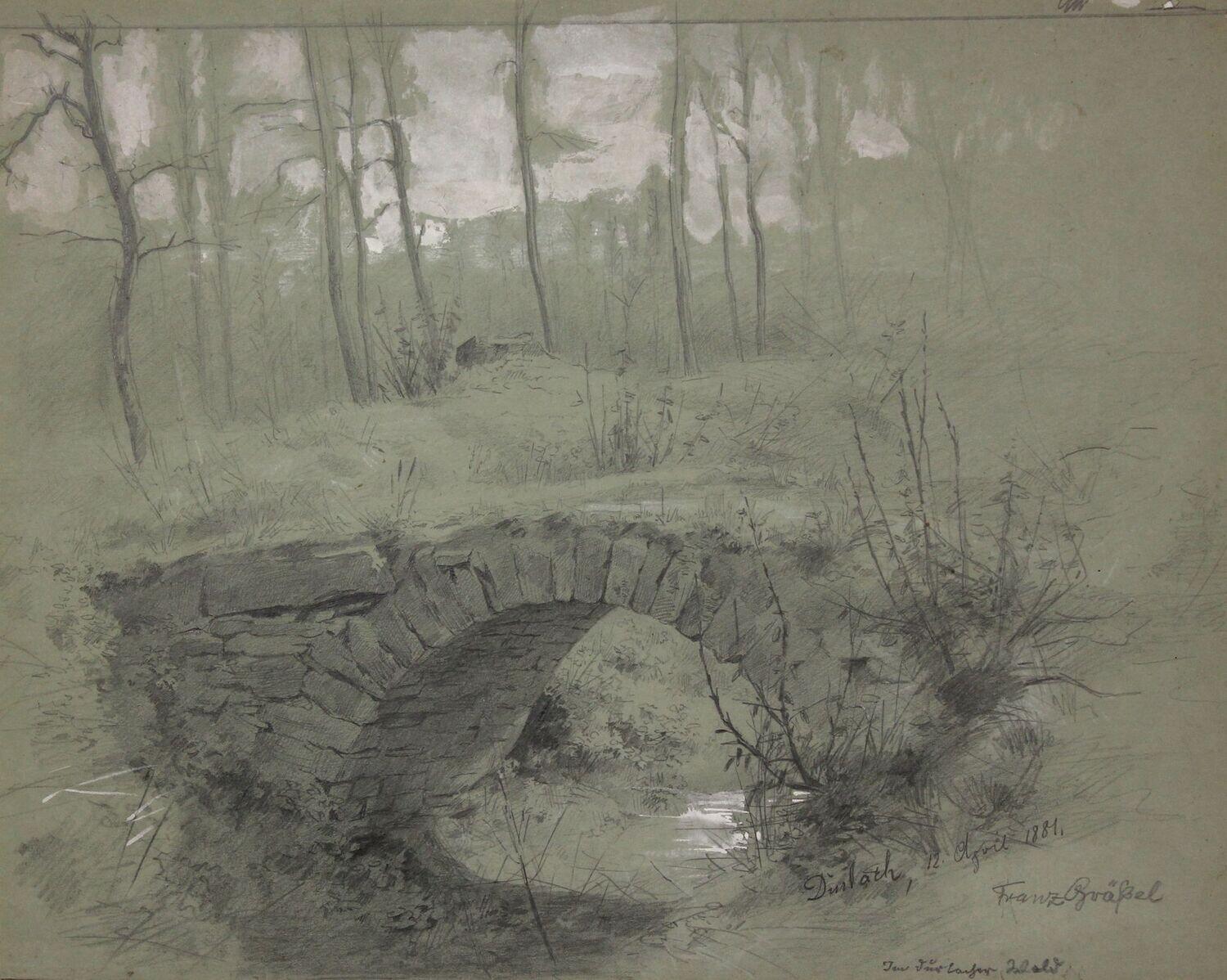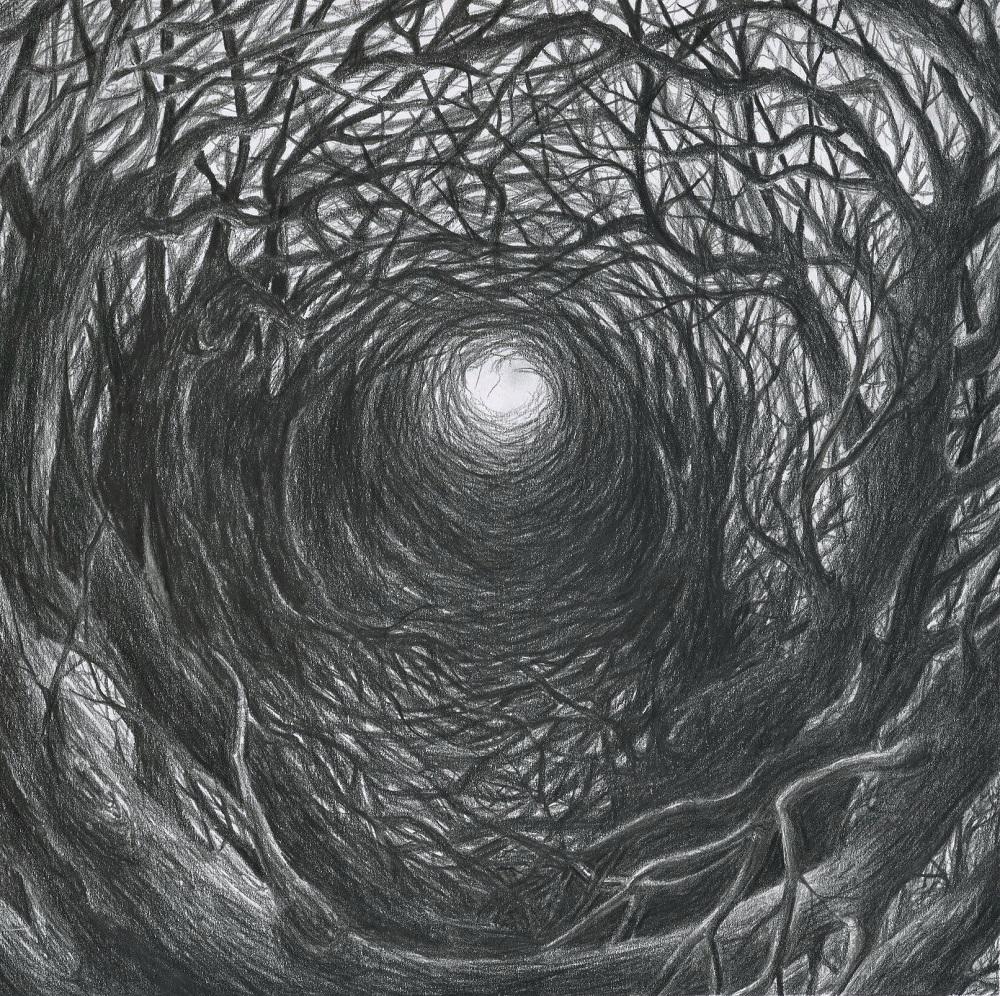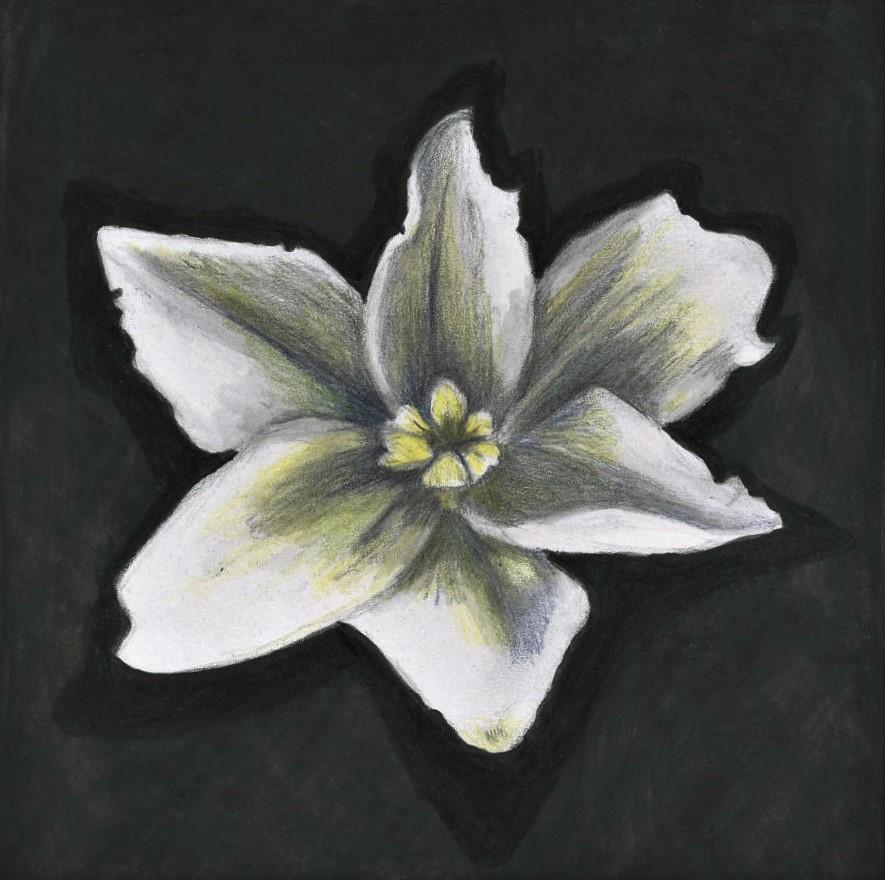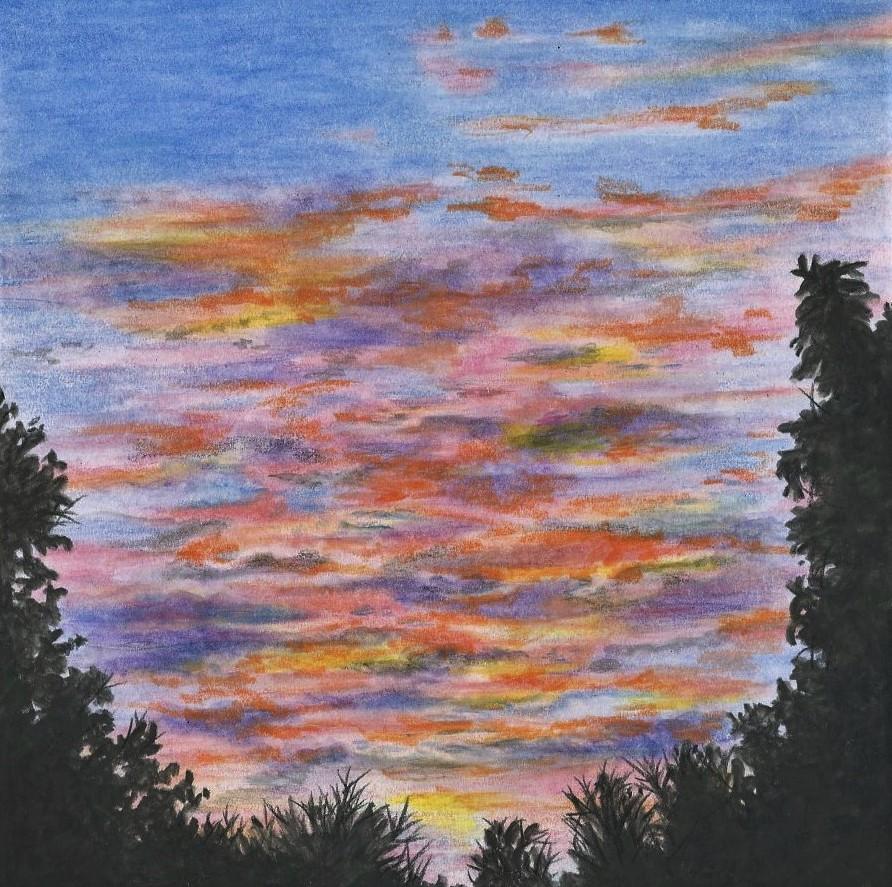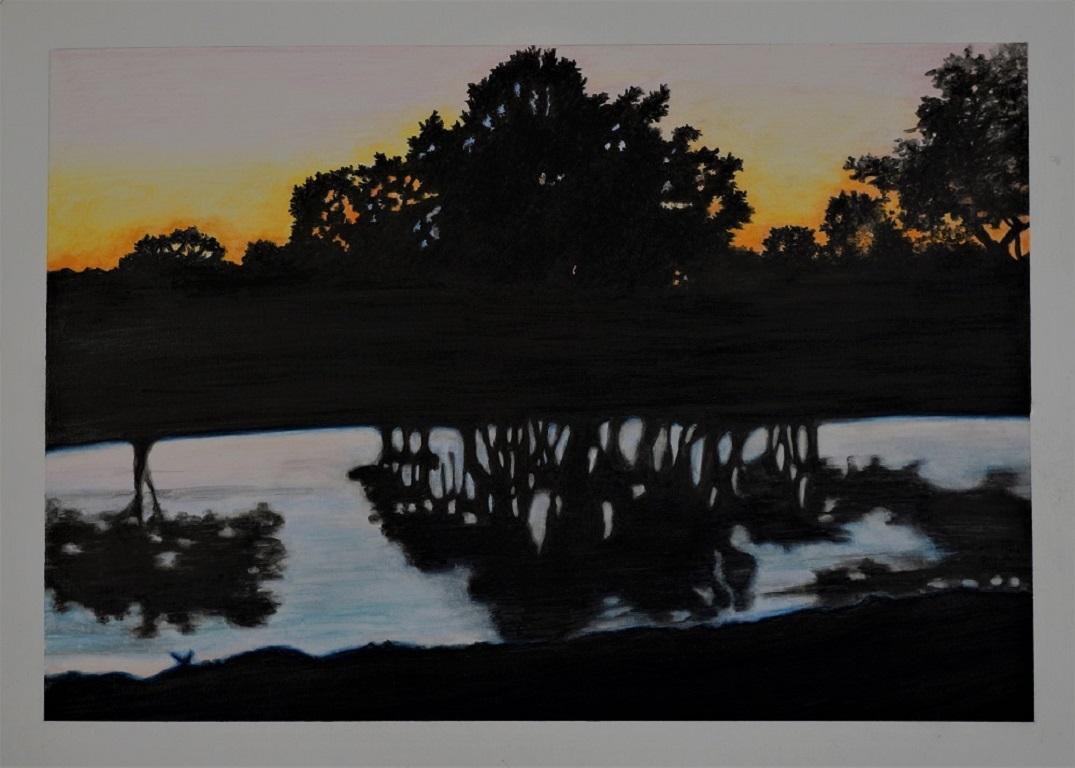
Lyte's Carey, Somerset - two 19th century drawings by John Chessell Buckler
View Similar Items
1 of 9
John Chessell BucklerLyte's Carey, Somerset - two 19th century drawings by John Chessell Buckler1834
1834
About the Item
- Creator:John Chessell Buckler (1793 - 1894, British)
- Creation Year:1834
- Dimensions:Height: 11.75 in (29.85 cm)Width: 14.875 in (37.79 cm)
- Medium:
- Movement & Style:
- Period:
- Condition:
- Gallery Location:London, GB
- Reference Number:1stDibs: LU104034406992
You May Also Like
- Tree and House - Charcoal by E.-L. Minet - Early 1900By Emile-Louis MinetLocated in Roma, ITTree and House is a precious pencil study realized by the French painter Emile-Louis Minet. The state of preservation is excellent. The piece of paper comes from a sketchbook, and it...Category
Early 1900s Naturalistic Landscape Drawings and Watercolors
MaterialsPencil, Charcoal
- Bridge on the River - Charcoal and Pencil by E.-L. Minet - 1919By Emile-Louis MinetLocated in Roma, ITBridge on the River is a beautiful drawing in pencil and charcoal realized by the French painter Emile-Louis Minet in 1919. The state of preservation is very good, except for a small...Category
1910s Naturalistic Landscape Drawings and Watercolors
MaterialsPencil, Charcoal
- Villa - Original Pencil on paper - 20th CenturyLocated in Roma, ITVilla is an original drawing in pencil on paper, realized by an Anonymous artist of the XX century, with the stamp of "Vente Scott" in red on the lower left. The State of preservati...Category
20th Century Naturalistic Figurative Drawings and Watercolors
MaterialsPencil
- E Wood, Farmhouse Near Godalming, Surrey, WatercolourLocated in Cheltenham, GBThis charming late 19th-century watercolour by British artist E Wood depicts a beautiful 15th/16th century farmhouse near Godalming in Surrey, England. As chickens rummage for food ...Category
1880s Naturalistic Landscape Drawings and Watercolors
MaterialsPaper, Watercolor, Gouache, Pencil
- In the forest of Durlach - Quiet ripple in a secret place -Located in Berlin, DEFranz Xaver Graessel (1861 Oberasbach/Baden - 1948 Emmering). In the forest of Durlach. 1881. Pencil drawing, heightened with white, on grey-green paper. 33 x 41.7 cm. Signed, dated and inscribed by the artist himself: 'Franz Graessel. Durlach, 12 April 1881". About the artwork The drawing depicts a view of the woods which, as if sharpening the visual focus, remains diffuse at the edges and does not allow the viewer to locate himself in the picture. As a result, the landscape appears to be an apparition, but at the same time it is given real substance by the solidity of the massive arched bridge made of quarry stone. As the main motif of the painting, the bridge, which blends in with nature like an archaic relic, also acts as a visual guide, drawing attention to the white, raised waters of the stream and the surrounding vegetation. The diffusion of perception that takes place there, however, draws the eye back to the bridge and thus to the overall view. This movement initiating a constant alternation of diffusion and concretion, which is the specific tension of the painting that brings the landscape to life. The materialisation and dematerialisation, however, does not take place solely through the eye's wandering through the picture; it is simultaneously linked to the viewer's approach to and distance from the picture, which loses its richness of detail precisely in the close-up, only to reconfigure itself with increasing distance. In this work, which dates from Graessel's studies in Karlsruhe, the artist reflects on the emergence of pictorial objectivity. Here, however, nature is more than a mere motif. The real connection between culture and nature is symbolically expressed by the choice of green paper. The drawing is an impressive testimony to Graessel's mastery of the sprezzatura with which he skilfully applies the most abstract of strokes, which visibly merge towards the centre of the picture. The signature and the exact date prove that Graessel gave this work more than the character of a mere sketch. About the artist Franz Graessel grew up in an environment that was to nourish his later key motifs: his parents' house was a mill. After attending the Karlsruhe Academy of Art from 1878 to 1884, where he studied under Carl Hoff, Graessel continued his training at the Munich Academy from 1886 to 1890 as a pupil of Wilhelm von Lindenschmidt. Trained primarily in genre and portrait painting, he initially portrayed the life of Black Forest farmers. From 1894 he turned increasingly to animal painting, concentrating on the depiction of ducks and geese, which earned him the nickname 'Enten-Graessel'. Graessel's work thus parallels that of Alexander Koester...Category
1880s Naturalistic Landscape Drawings and Watercolors
MaterialsPaper, Chalk, Pencil
$2,112 Sale Price20% OffFree Shipping - French Townscape Landscape StudyBy Emile LejeuneLocated in Houston, TXA French landscape of a town study. The work is stamped by the artist. Many others are available. Please inquire to buy the entire collection. Artist Biography: Emile Lejeune...Category
1940s Naturalistic Landscape Drawings and Watercolors
MaterialsGraphite
